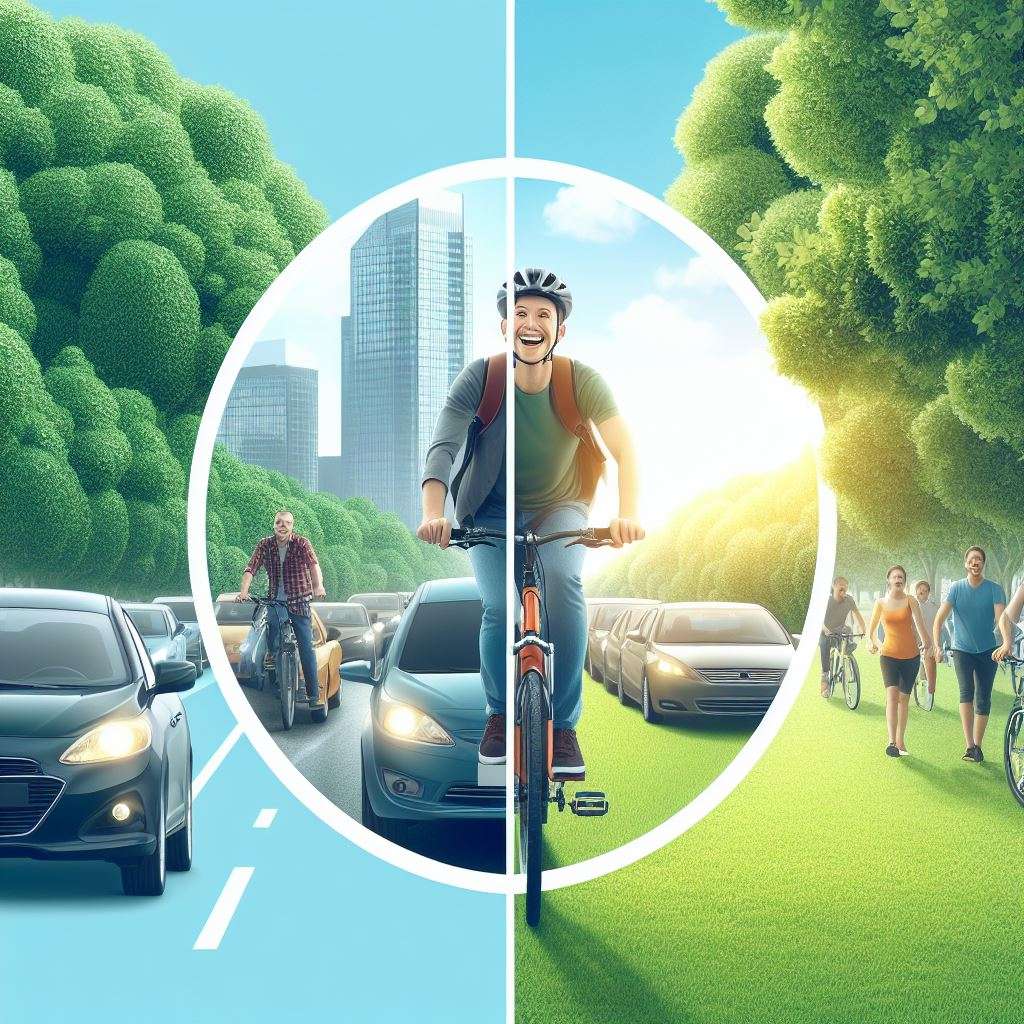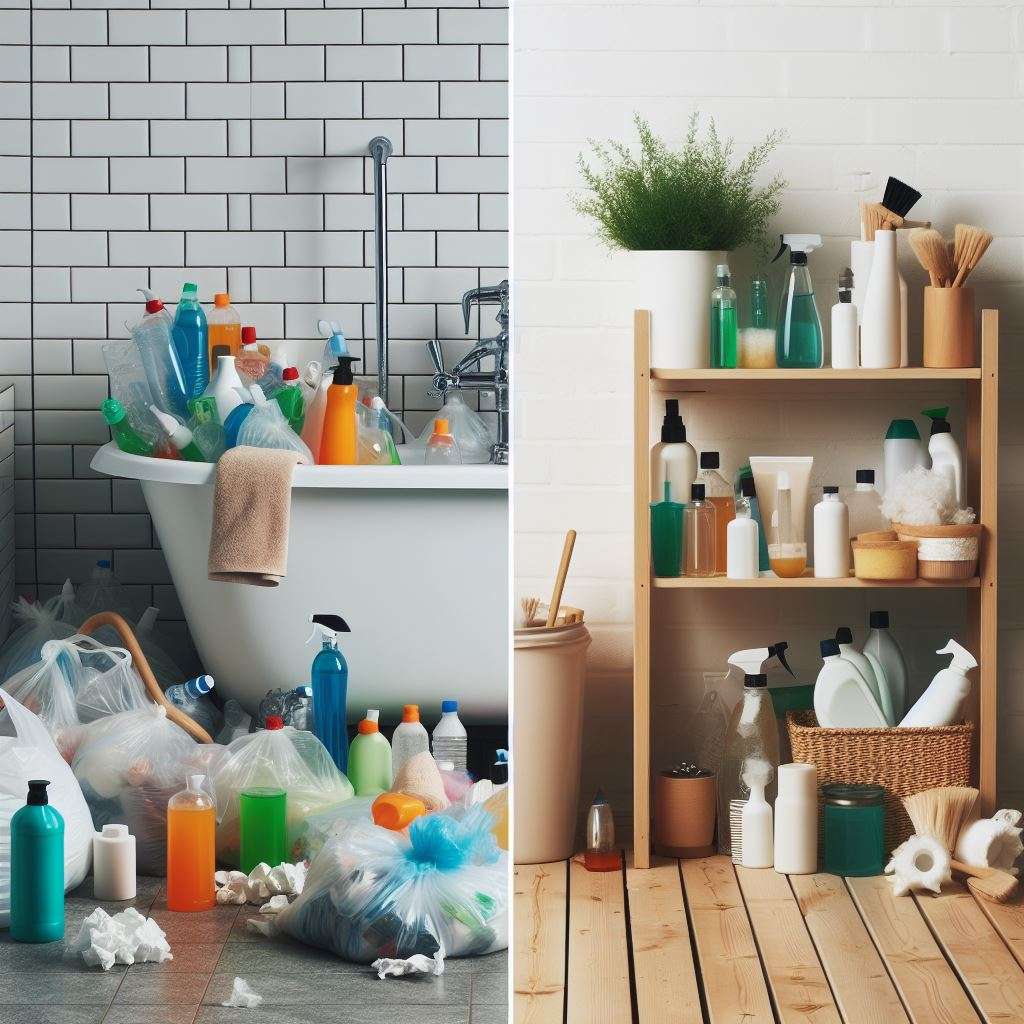Feeling overwhelmed by the enormity of climate change? Don’t despair! This article is your passport to making a difference, one easy swap at a time. We’ll explore everyday habits you can ditch and eco-friendly alternatives to embrace, putting a smile on your face and the planet’s.
Introduction

Climate change is the biggest challenge of our time. It threatens our health, our economy, our security, and our future. The scientific evidence is clear: human activities are causing global warming, and we need to act urgently to reduce our greenhouse gas emissions.
But what can we do as individuals? How can we make a difference in the face of such a complex and daunting problem? The answer is simple: we can start by making small changes in our daily lives. By swapping some of our habits and choices for more sustainable ones, we can reduce our environmental impact, save money, and improve our well-being.
In this article, we’ll show you how easy and fun it is to go green. We’ll give you some practical tips and examples of simple swaps you can make in different areas of your life, from food to fashion, from cleaning to travel, and from home to community. You’ll discover that going green is not only good for the planet, but also for you!
Swap Shop
Food
One of the easiest and most impactful ways to be more environmentally friendly is to change your eating habits. Here are some simple changes you can make to reduce your food-related carbon footprint and enjoy healthier and tastier meals:
Use reusable containers and buy local produce instead of plastic-wrapped snacks to reduce waste and support local businesses.
Choose plant-based alternatives for meat and dairy to lessen your environmental impact and improve your health. Add more fruits, vegetables, grains, beans, nuts, and seeds to your diet, and try plant-based options like soy milk, almond cheese, and tofu for new flavors and nutrients.
Trade imported and processed foods for seasonal and organic options to reduce your carbon footprint and promote better health and environmental sustainability.
Fashion
Another area where you can have a significant impact is your wardrobe. The fashion industry is one of the most polluting and exploitative sectors globally, generating substantial waste, emissions, and human rights abuses. Here are some straightforward changes you can make to dress more sustainably and ethically:

- Opt for thrifting, vintage, or ethical brands over fast fashion. Fast fashion harms the environment and exploits workers. By choosing sustainable options, you can reduce your impact, save money, and express your values.
- Switch to natural fabrics like cotton, linen, wool, or silk instead of synthetic fabrics like polyester, nylon, or acrylic. Natural fabrics are made from renewable resources, biodegradable, and more comfortable to wear. This change will reduce exposure to toxins and help protect the environment.
- Replace frequent washing and drying with airing and mending. This reduces damage to clothes, conserves energy and water, and minimizes the release of microfibers and chemicals. Instead of washing after every wear, air out and spot-clean clothes. Use gentle detergent, cold wash cycles, and drying racks. Additionally, mend or take damaged clothes to a tailor or repair shop to extend their lifespan and save resources.
Cleaning
Another aspect of your life where you can go green is your cleaning routine. Many of the cleaning products we use are full of harsh chemicals that can harm our health and the environment. Here are some simple swaps you can make to clean more naturally and safely:
– Switch to natural cleaning solutions to avoid harsh chemicals that can harm your health and the environment. Use household ingredients like vinegar, baking soda, lemon, or salt, or buy eco-friendly cleaners made from plant-based or organic ingredients. This will protect your health, the environment, and save you money.
– Switch to reusable cloths and sponges instead of disposable wipes and paper towels to reduce waste and environmental harm. Reusable options are made from natural or recycled materials, can be washed and reused multiple times, and help save resources and money.
– Swap plastic bottles and sprays for glass jars and pumps to reduce waste and pollution. Glass is made from renewable sand and is more durable, reusable, and recyclable. Refill them with homemade or natural cleaners to save money and reduce waste.
Travel
Another way you can go green is to change how you travel. Transportation is one of the main sources of greenhouse gas emissions, contributing to global warming and climate change. Here are some simple swaps you can make to travel more sustainably and enjoyably:
– Swap car journeys for biking, walking, or public transport to reduce environmental impact, save money, and improve health.
– Consider swapping flying for train travel to reduce your environmental impact, save money, and enjoy a more comfortable and eco-friendly journey.
– Swap hotels for homestays or eco-lodges. Hotels are comfortable, but they are also wasteful and harmful. They consume a lot of energy, water, and chemicals, and generate a lot of waste, emissions, and noise. They also often lack local character and culture and isolate you from the people and places you visit. Instead of staying at hotels, try to stay at homestays or eco-lodges, which are more sustainable, affordable, and authentic. You’ll reduce your environmental impact, save money, and experience the local way of life. You’ll also make new friends, learn new things, and have more fun.
Green Living Hacks
Here are some more green living hacks you can try to make your life more eco-friendly and enjoyable:
- Carry a reusable tote bag. A reusable tote bag is a must-have for any green living enthusiast. It can help you avoid using plastic bags, which are one of the most common and harmful forms of plastic pollution. Plastic bags are made from petroleum, which is a non-renewable and polluting resource. They also take a long time to decompose, and can end up in landfills or oceans, where they can choke, entangle, or poison wildlife and human health. A reusable tote bag is made from natural or recycled materials, such as cotton, hemp, or jute. It is durable, washable, and versatile. You can use it to carry your groceries, books, clothes, or anything else. You’ll reduce waste, save money, and show your green style.
- Compost your food scraps. Composting is the process of turning organic waste, such as food scraps, into nutrient-rich soil. Composting can help you reduce your waste, save money, and improve your garden. Food scraps are a major source of waste and greenhouse gas emissions, as they rot in landfills and release methane, which is a potent greenhouse gas that causes global warming and climate change. By composting your food scraps, you can divert them from landfills and turn them into valuable fertilizer for your plants. You can compost your food scraps at home, using a bin, a pile, or a worm farm. You can also join a community composting program, or donate your food scraps to a local farm or garden. You’ll reduce your environmental impact, save money, and grow your own food.
- Opt for energy-efficient appliances. Energy-efficient appliances are appliances that use less energy than conventional ones, such as LED bulbs, low-flow showerheads, or smart thermostats. Energy-efficient appliances can help you reduce your energy consumption, save money, and lower your carbon footprint. Energy consumption is one of the main sources of greenhouse gas emissions, contributing to global warming and climate change. It also costs you money, as you pay for the electricity or gas you use. By opting for energy-efficient appliances, you can use less energy, pay less bills, and emit less carbon dioxide. You can also use renewable energy sources, such as solar panels, wind turbines, or hydroelectric power, to power your appliances. You’ll reduce your environmental impact, save money, and support clean energy.
Benefits Beyond the Planet
Going green is not only good for the planet, but also for you. Here are some of the personal benefits of going green:
Improved health. Going green can improve your physical and mental health, by reducing your exposure to toxins, improving your nutrition, and increasing your physical activity. For example, by eating more plant-based foods, you can lower your risk of obesity, diabetes, heart disease, and cancer. By using natural cleaners, you can avoid skin irritation, respiratory problems, and allergies. By biking, walking, or taking public transport, you can boost your cardiovascular fitness, muscle strength, and mood. Going green can help you live longer, happier, and healthier.
Reduced stress. Going green can reduce your stress, by simplifying your life, enhancing your well-being, and connecting you with nature. For example, by buying less and buying better, you can declutter your space, save your time, and focus on what matters. By making your own or buying natural products, you can relax your mind, pamper your body, and nourish your soul. By spending more time outdoors, you can enjoy the fresh air, the sunlight, and the beauty of nature. Going green can help you calm your nerves, clear your thoughts, and uplift your spirits.
Sense of accomplishment. Going green can give you a sense of accomplishment, by empowering you, inspiring you, and rewarding you. For example, by making small changes in your daily life, you can feel more confident, capable, and in control. By sharing your green swaps and learning from others, you can feel more motivated, creative, and curious. By seeing the positive results of your actions, you can feel more satisfied, proud, and happy. Going green can help you grow your skills, expand your horizons, and fulfill your potential.
Community Connections
Going green is not only good for you, but also for others. Here are some ways you can connect with your community and make a difference together:
Share your green swaps. Sharing your green swaps is a great way to spread the word, inspire others, and learn new things. You can share your green swaps with your friends, family, neighbors, or coworkers, by telling them about your experiences, showing them your products, or inviting them to join you. You can also share your green swaps with the online community, by posting them on social media, blogs, or forums, or joining groups, chats, or webinars. You’ll create awareness, spark conversations, and exchange ideas.
Join local initiatives. Joining local initiatives is a great way to get involved, support causes, and make an impact. You can join local initiatives that promote sustainability, such as farmers’ markets, community gardens, recycling programs, or environmental campaigns. You can also join local initiatives that address social issues, such as poverty, education, or health. You’ll meet like-minded people, contribute to your community, and make a difference.
Conclusion
Going green is not hard, boring, or expensive. It is easy, fun, and rewarding. It is not a sacrifice, but a choice. A choice that can make your life better, and the planet happier.
So what are you waiting for? Start today, start small, and start swapping. Celebrate your progress, and remember that every swap, however little, makes a difference. You have the power to change the world, one easy swap at a time.
Green up your life, and smile!
Further Reading
- greenamerica.org
- Strategies for promoting proenvironmental behavior
- Upcycled or recycled products: Choose items made from repurposed materials to reduce waste and support creative artisans
- Reusable Straws: Skip the Plastic Straw and Carry Your Own Metal or Bamboo Straw When Enjoying Drinks on the Go
